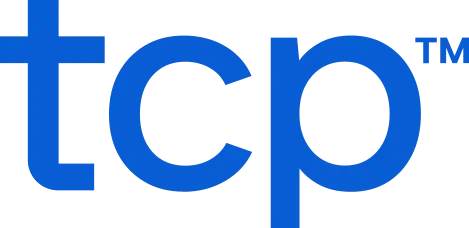There’s a common scenario we’ve seen play out for hundreds of buyers who’ve become TCP customers over the years:
You’re evaluating time and attendance software, and the sales pitch for an all-in-one HCM suite sounds tempting — one vendor, one login, one system.
But you also know the last time you picked a “good enough” tool, you spent months dealing with payroll errors and frustrated managers.
Now you have to decide: Do I go deep with a dedicated solution, or settle for a time module that’s just one tab in a giant HR system?
Here’s the unfortunate reality most buyers discover after going through this evaluation stage and onboarding with an HCM — suites that promise to do everything often struggle to excel at anything.
Time and attendance impact compliance, payroll accuracy, labor costs, and the functional benefits of managing employee time. With this many variables at play, buyers like you are stuck at a crossroads. Is the standalone time and attendance software worth it, or is “good enough” in an all-in-one HCM suite actually good enough?
This guide breaks down the differences, benefits, and trade-offs so you can decide what’s best for your workforce.
Overview: standalone time and attendance software vs. all-in-one HCM
Before you can decide which direction to take, it helps to see the differences side by side. While both standalone time and attendance software and all-in-one HCM suites can track time, they approach it very differently:
- Standalone time and attendance solutions – Purpose-built for one job, so they tend to go deeper in that function and are built to scale with you — more configuration options, more industry-specific features, and interfaces designed for the people who actually use them every day.
- All-in-one HCM suites – Offer a broader set of modules under one roof, which can simplify vendor management and create a more unified data environment, but often at the cost of depth or flexibility in any single area.
The table below outlines how these approaches stack up across the factors your organization cares about most.
| Factor | Standalone time and attendance software | All-in-one HCM suite with time and attendance functionality |
|---|---|---|
| Feature depth | Purpose-built for timekeeping, compliance, and industry-specific scheduling | Meets basic needs but lacks specialized functionality |
| User experience | Interfaces tailored to user challenges and their daily workflows; faster onboarding, higher adoption; each feature and capability feels purpose-built to the time and attendance function | Leaves much to be desired for the “platform” feeling, as varied products are stitched together but lack unity in their purpose; experience feels fragmented; generic workflows can slow users down |
| Implementation | Faster rollout — one function to configure | Longer rollout — must implement full suite |
| Integration | Open APIs, pre-built connectors for payroll/ERP/HCM | Strong internal integration, weaker external links |
| Industry fit | Built-in support for complex rules and niche workflows | Generic; requires customization to meet unique needs |
| Upfront cost | Pay for what you need | Bundled pricing but higher switching costs; lower cost efficiency as you pay for extra features that aren’t needed |
| Total cost of ownership | Only liable for the setup and support of the features/capabilities you use | Paying for licensing, implementation, and ongoing support for all modules in the suite, not just what you’re using |
| Vendor flexibility | Swap components without re-platforming everything | Switching vendors means a complete system change |
| Risk profile | A point solution is vendor agnostic by design, making it more adaptable to future software choices, helping to de-risk your vendor/capability infrastructure | An all-in-one solution can compromise future software optionality, or force an expensive, whole-system replacement when its capabilities can’t hold up |
How all-in-one HCM suites offer time and attendance
All-in-one HCM or ERP suites often include a time and attendance module in their broader package. On the surface, that can seem like a win with one source of truth and one system to learn.
But the reality is more nuanced.
Because these modules are just one piece of a much larger platform, they’re often built to cover the basics rather than meet the specific, evolving needs of different industries or compliance environments.
The challenge of all-in-one HCM suites with time and attendance capabilities
When a vendor builds payroll, HR, recruiting, and time and attendance under one roof, the time module rarely gets the same investment.
Here’s where many all-in-one users start to run into problems:
- Limited labor compliance configurations for FLSA, CBAs, or state laws
- Limited usability of reporting and analytics for untrained users
- Interfaces designed for general HR users, not the employees actually clocking in/out
- Slower feature updates because the roadmap is split across dozens of modules
- “Check the box” mentality on improving functionality outside of core offering
The benefits of all-in-one HCM suites
Just because we have a dedicated time and attendance tracking system at TCP doesn’t mean we’re totally biased against all-in-one suites.
If your workforce is relatively small, has straightforward scheduling needs, or operates in a single jurisdiction, the convenience of a single system may outweigh the lack of advanced features — if it comes at the right price.
The unified environment of all-in-one HCMs isn’t without appeal:
- A single vendor relationship to manage
- A unified interface across HR functions
- Built-in integration between payroll, benefits, and time data
- Potential cost savings for small teams with simple needs
Yet, the same qualities that make all-in-one suites appealing can also be their biggest drawback.
When time and attendance is just one of many modules, it rarely gets the depth or agility needed to handle complex compliance rules, industry-specific scheduling, or rapid operational changes. This is where standalone time and attendance software comes in.
Why your organization needs standalone time and attendance software
Dedicated time and attendance tracking software like TimeClock Plus is built for the people who actually use it, not just decision makers. The employees clocking in and out, managers approving hours, and HR/payroll admins ensuring accuracy and compliance.
Every workflow is designed to make those tasks faster, simpler, and less error-prone, regardless of how complex the environment or process may be. That focus pays off in several ways.
Higher adoption and easier onboarding
Purpose-built interfaces guide users directly to the actions they need. Capabilities like clock in/out, timesheet approvals, and leave requests are all accessible without forcing someone to navigate irrelevant HR or payroll menus.
This means employees are more likely to engage with the system, and managers spend less time fielding “how do I…” questions. Faster adoption leads to better data accuracy, fewer workarounds, and greater ROI.
Deeper functionality where it matters
With a standalone system, you’re not bending your workflows to fit generic settings.
Whether you need job costing down to the minute, overtime alerts that actually prevent violations, or break enforcement that keeps you compliant without micromanaging, it’s all built in. These core capabilities handle complexity much better than bolt-ons to HCMs, without requiring expensive customizations or clumsy manual processes.
Here are a few examples of where standalone time and attendance software makes all the difference.
Example: Complex pay calculations
The myriad of pay types, pay rates, overtime pay types, shift premiums, etc., all contribute to the complexity of calculating and tracking time and attendance. Without a time and attendance solution built to roll with the nuances your organization throws at it, you’re in for a hard time come payroll.
Example: Distributed workforces
When your teams are spread across multiple locations in different jurisdictions, your first thought (aside from how to schedule them) is compliance — each location introduces different and/or additional compliance rules. That’s without considering complicated union contracts and CBAs, which compound the complexity of managing compliance across the board.
Trying to get an all-in-one solution to adapt to these scenarios is as tricky as handling the scenarios themselves.
Industry-specific fit and compliance readiness
Each industry has different staffing realities and labor laws, and a one-size-fits-all time module often can’t keep up. Standalone solutions offer built-in tools for environments as varied as:
- Unionized manufacturing plants
- Multi-site construction workforces
- 24/7 healthcare facilities
- K–12 districts managing substitutes
- Retail operations navigating fair scheduling laws
Configurable rules engines, credential tracking, and tailored reporting help you maintain compliance in each of these spaces without reinventing the wheel.
Integration flexibility without lock-in
The fear of “too many systems” is still a problem, but the cost of switching can be mitigated with the right integrations. Modern standalone platforms offer open APIs and pre-built connectors to central HR, payroll management, and ERP systems. In practice, that means:
- Attendance data flows automatically to payroll — no re-keying or spreadsheets
- Scheduling and time tracking link directly, reducing manual work and eliminating errors from double entry
- Replacing components without having to rebuild your entire HR tech stack
With an HCM suite, replacing an underperforming module often means re-platforming everything. A standalone time and attendance approach lets you adapt faster and lower your vendor risk.
Why all-in-one HCMs don’t work for your industry
Your industry has its own set of unique challenges and scenarios.
If you’re in healthcare for instance, you have different workforce structures, compliance pressures, and staffing realities than K-12 or local government. And that’s where specialized time and attendance consistently outperforms generic modules.
The deeper configuration options, built-in compliance tools, and tailored workflows in a standalone time and attendance system can address situations that an all-in-one’s “one-size-fits-all” approach simply can’t match.
Here’s what happens when you match the right time and attendance features to the real-world challenges of your industry:
| Industry | Why standalone time and attendance software matters |
|---|---|
| K-12 education | Track staff hours, manage substitutes and extra duty assignments, and maintain compliance with hourly limits — integrated substitute management saves admin time. |
| Government & public safety | Enforce complex overtime pay rules and union agreements; maintain 24/7 shift rotations, minimum staffing, and certification requirements. |
| Healthcare | Handle 12-hour rotating shifts, on-call pools, credential-based assignments, and patient census adjustments while enforcing rest period rules. |
| Retail & hospitality | Use AI-driven labor forecasting, plus employee self-serve options and actions to match staffing to demand and improve employee satisfaction. |
| Manufacturing & construction | Support job costing, project codes, remote and offline clock-ins, and multiple overtime pay rates tied to roles or trades. |
| Small business | Quick deployment, low training overhead, and only paying for what you need — no IT team required. |
| Large enterprise | Keep core HR in an HCM suite while plugging in advanced timekeeping for specific regions, plants, or hourly workforces. |
Examples of standalone time and attendance vs. all-in-one HCMs by industry
We never expect you to just take our word for it. Real-world examples are where the trade-offs of all-in-one solutions become obvious.
On paper, both options can “track time.” But in practice, the difference shows up in the tactical gaps — when a shift is left uncovered, a union rule gets missed, or payroll data has to be reconciled by hand at the end of the week.
Here’s how those differences play out in the day-to-day operations of different industries.
K–12 education
- All-in-one – A large school district’s HCM suite can log teacher hours but can’t automatically account for substitute coverage or extra duty work, forcing administrators to track sub time separately and enter it manually for payroll.
- Standalone – That same district uses a dedicated time and attendance system integrated with substitute and extra duty management. When a history teacher calls out and the system assigns a qualified sub, or when an English teacher works the car pickup line during the week, the system logs their hours automatically and sends the data straight to payroll.
See what K-12 time and attendance software looks like in action.
Healthcare
- All-in-one – A regional hospital’s HCM suite records hours worked but doesn’t validate them against credential requirements, shift length limits, or mandatory rest periods, leaving nurse managers to catch issues manually.
- Standalone – The hospital’s specialized time system enforces credential-based assignments, flags missed breaks, and automatically applies pay rules for rotating 12-hour shifts, ensuring attendance records meet healthcare labor standards.
See what healthcare time and attendance software looks like in action.
Manufacturing
- All-in-one – An automotive parts plant’s HCM suite can track basic clock-ins and clock-outs but can’t reliably capture detailed job codes, leaving job costing reports incomplete and calculating hours worked manually at the end of each week.
- Standalone – Workers at the plant clock in on biometric readers tied to specific job codes, feeding real-time labor cost data into the ERP for accurate job costing and storing punches offline until connectivity is restored.
See what manufacturing time and attendance software looks like in action.
Public safety and government
- All-in-one – A city police department’s HCM suite logs officer hours but can’t automatically apply seniority rules or union overtime agreements, so compliance checks happen after the fact.
- Standalone – The department’s specialized time system applies union rules and seniority requirements at the point of clock-in, flags overtime that would violate agreements, and keeps an audit-ready record of every officer’s attendance.
See what public safety and government time and attendance software looks like in action.
Retail
- All-in-one – A national clothing retailer’s HCM suite captures basic punch data but doesn’t adjust for real-time staffing changes, meaning unplanned extra hours during a weekend sale aren’t accurately reflected until payroll review.
- Standalone – The retailer’s time and attendance system records all hours worked in real time, automatically updating attendance when associates stay late to restock after a sale, leave early, or pick up an extra shift — reducing payroll errors and maintaining compliance with fair workweek laws.
See what retail time and attendance software looks like in action.
Next steps: choosing your time and attendance solution
You know your team’s needs better than anyone — think about how a “good enough” tool can cost more in the long run. Choosing between a standalone time and attendance solution and an all-in-one suite comes down to priorities.
If you value specialization, compliance confidence, and system flexibility, a dedicated time and attendance software will likely serve you better. If you prioritize vendor consolidation and have simple timekeeping needs, a suite could suffice. Just confirm the module meets your actual requirements.
With modern integration options in a dedicated time and attendance solution, you don’t have to trade connectivity for capability.
Why TimeClock Plus works best for your organization
With today’s integration capabilities, you don’t have to choose between specialization and connectivity. Time and attendance solutions like TimeClock Plus can plug into your existing HCM and payroll systems, streamlining data flow while giving you:
- Accurate, real-time time data — no time tracking spreadsheet patch-jobs
- Simpler calculations for tracking time — through in-depth job costing functionality
- Payroll that runs right the first time — fewer errors, less reworks
- Compliance confidence — built-in tools to handle your labor laws and agreements
- Better adoption and usability — with an interface your employees actually want to use
The best choice is the one that keeps your organization confident, compliant and in control. And not just today, but as your workforce evolves and the demands on your time and attendance system grow.
TCP Software’s employee scheduling and time and attendance solutions have the flexibility and scalability to suit your business and your employees, now and as you grow.
From TimeClock Plus, which automates even the most complex payroll calculations and leave management requests, to Humanity Schedule for dynamic employee scheduling that saves you time and money, we have everything you need to meet your organization’s needs, no matter how unique. Plus, with Aladtec, we offer 24/7 public safety scheduling solutions for your hometown heroes.
Ready to learn how TCP Software takes the pain out of employee scheduling and time tracking? Speak with an expert today.


